With the “Great Resignation” in full force, it’s a job seeker’s market. But with so many job seekers, it can seem even harder to stand out and get noticed by companies and hiring managers. While many professionals recognize the importance of having up-to-date resumes and LinkedIn profiles, it’s all too easy to forget to make them findable.
One important way to make sure your personal marketing documents are easy to find is to SEO your resume and LinkedIn. SEO isn’t just used for the internet, it’s also used by LinkedIn. Additionally, many companies use an applicant tracking system (ATS) to scan your resume. We want to share some basic ways you can get started with how to SEO your resume and LinkedIn because we want to help you find your dream job this year.
Your summary. In your LinkedIn profile, use keywords that will help you be found more easily by hiring managers and recruiters. Make sure to list keywords relevant to what you do in your summary. Are there common keywords in the jobs you are applying for? Make sure to include those in your summary.
Keywords are equally important on your resume. However, we recommend tailoring your resume to each unique job posting for best results. This will ensure that you use the keywords that best fit each job position instead of general keywords. Create a master copy of your resume, then create a copy for each job position you apply for. Carefully scan the keywords listed in the job post and make sure to list the keywords that apply to you in the summary at the top.
Your skills. This is another great place to list keywords on your resume and LinkedIn profile. Your skills section should be towards the top of your resume to ensure that keywords are easily picked up by ATS. Additionally, LinkedIn lets you list up to 25 skills so make sure to include your most important keywords here. For keyword ideas, look at LinkedIn profiles of other professionals who have your position or the position you would like to have.
Pay attention to the small details. This is especially true of your LinkedIn profile. Customize your LinkedIn profile URL, make sure your profile and background images are labeled with your name and a keyword, and consider using hashtags in your experience section.
Once you have added keywords to your resume and LinkedIn profile, ask a friend or family member to read through it for feedback. Additionally, when thinking about keywords, search for related keywords online that you can use in your resume and LinkedIn profile. This will help your marketing documents read more naturally without sounding overdone.
At Create Your Career Path, we believe that no one should be unhappy in their career. Need more help finding a job you love? Schedule a free consult today.




